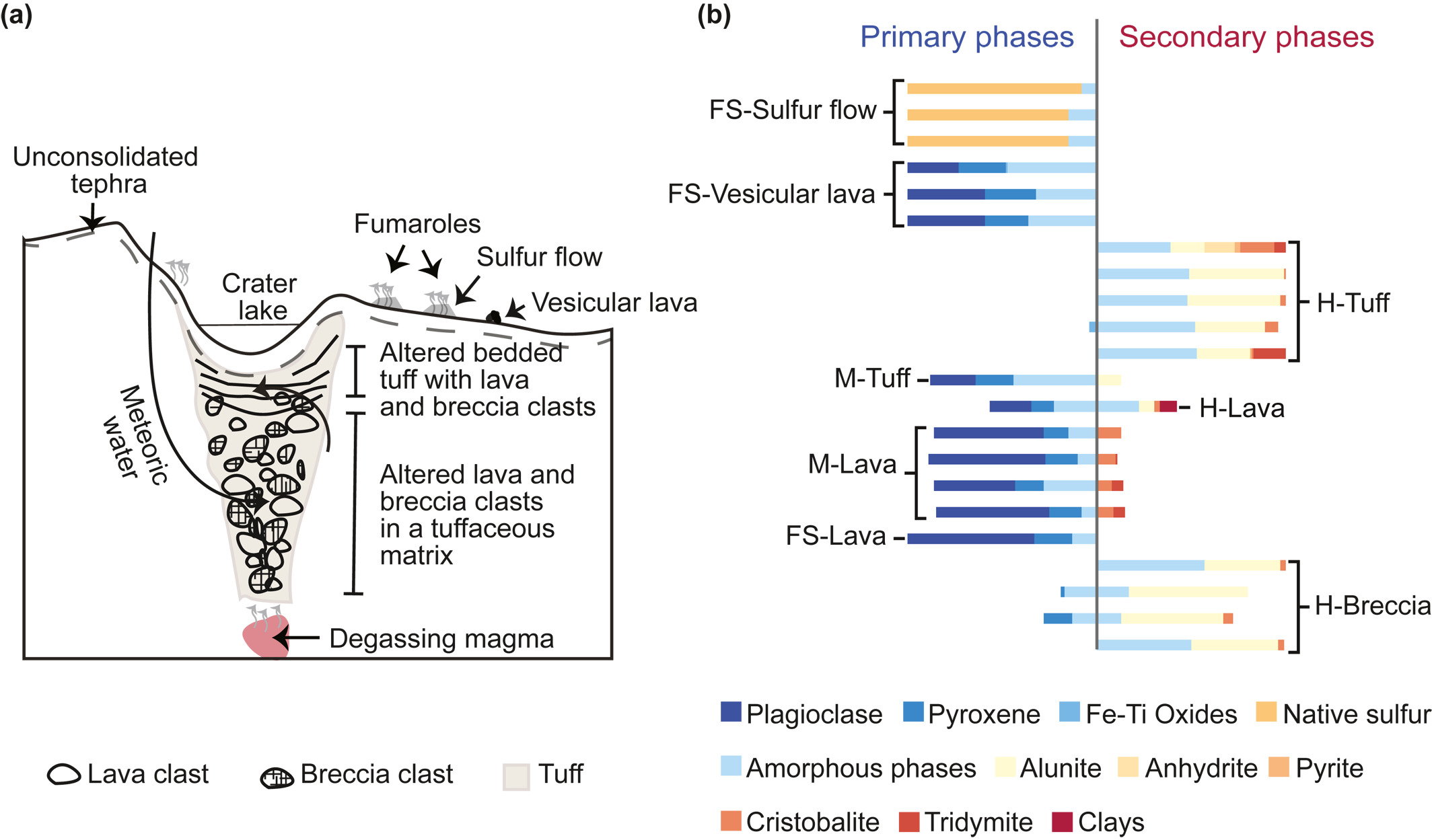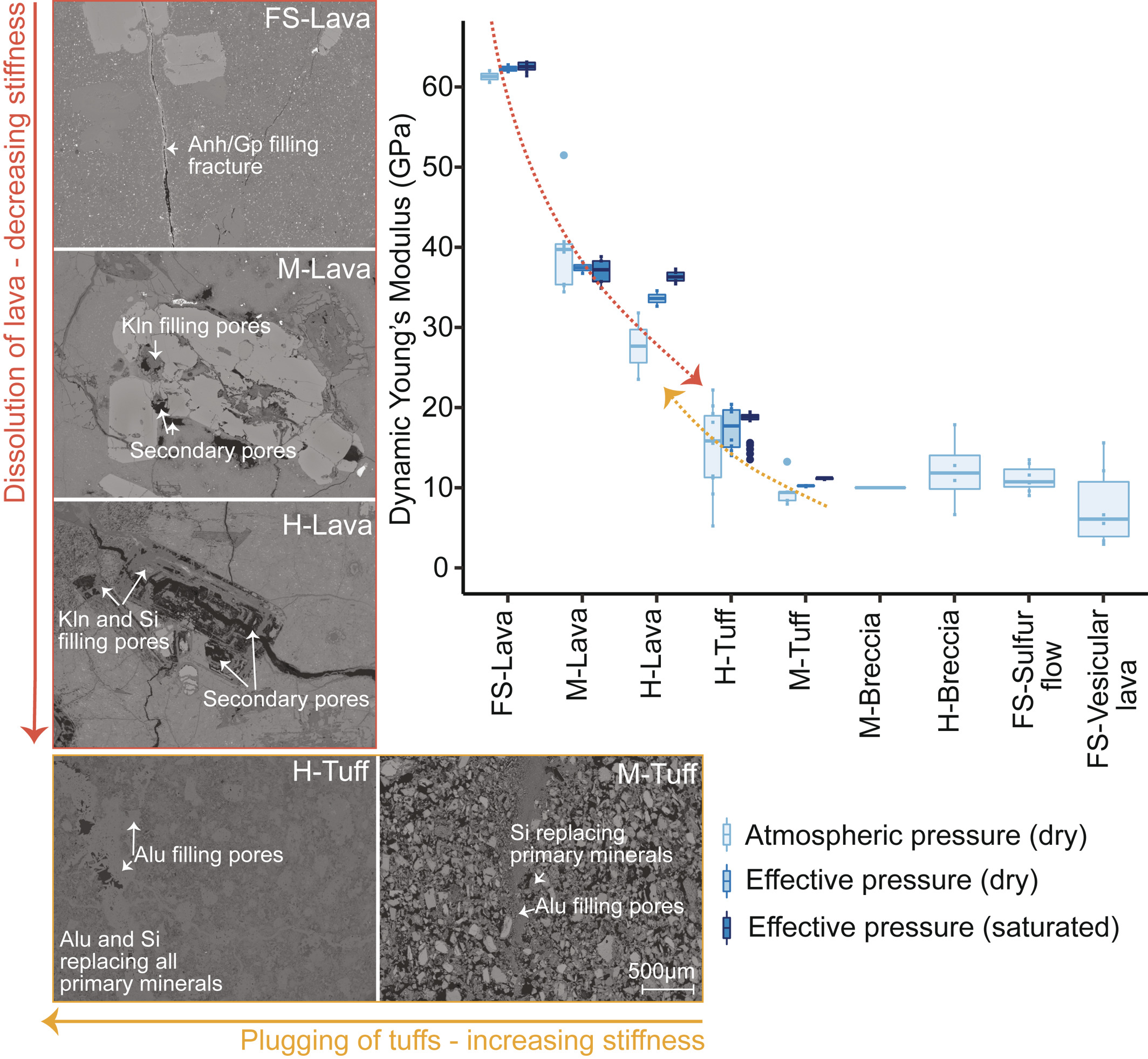

The role of tuffs in sealing volcanic conduits
The Role of Tuffs in Sealing Volcanic Conduits
Geophysical Research Letters | 2021
Authors:
Shreya Kanakiya, Ludmila Adam, Michael C. Rowe, Jan M. Lindsay, Lionel Esteban
DOI: https://doi.org/10.1029/2021GL095175
In volcanoes, hot fluids circulate through the rocks and change their physical and chemical properties. Here we study how these changes occur in different rocks within the volcano's interior. We find that in lavas, rocks that generally have a low volume of pores, these fluids create new pathways to flow through by dissolving the rock-forming minerals. In contrast, fluid pathways in tuffs, which are inherently highly porous rocks, are blocked by the precipitation of new minerals in the pore spaces. Compaction under the pressure of overlying rocks in the volcano's interior can further reduce the fluid pathways through tuffs. Such reduction in fluid pathways within the volcano can aid the build-up of pressure, making them prone to explosive eruptions.
Highlights
-
In volcanic conduits, lavas undergo net dissolution and tuffs net secondary mineral precipitation.
-
The elasticity of conduit-filling lavas and tuffs also changes due to alteration
-
Inherently porous and permeable tuffs, when compacted and highly altered, can form seals within volcanic conduits.
Frequently Asked Questions
- Where can I find the samples used in this study?
-
The samples are at the Physics of Rock Lab at the University of Auckland.
- Where can I find the data from this study?
-
All data from this study are available in the online open-access repository - figshare. Citation: Kanakiya, S. (2021). Physicochemical and corresponding elastic properties of hydrothermally altered rocks from Whakaari (White Island) volcano, New Zealand. https://doi.org/10.17608/k6.auckland.13619297